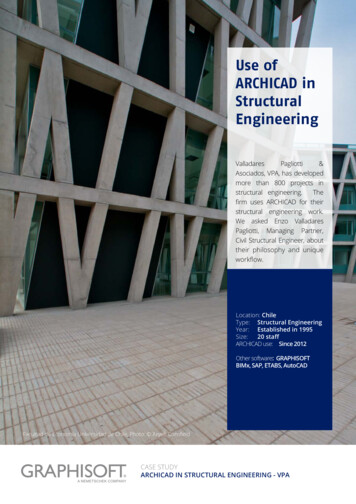
Transcription
Use ofARCHICAD inStructuralEngineeringMain image placeValladaresPagliotti&Asociados, VPA, has developedmore than 800 projects instructural engineering.Thefirm uses ARCHICAD for theirstructural engineering work.We asked Enzo ValladaresPagliotti, Managing Partner,Civil Structural Engineer, abouttheir philosophy and uniqueworkflow.Location: ChileType: Structural EngineeringYear: Established in 1995Size:20 staffARCHICAD use: Since 2012Other software: GRAPHISOFTBIMx, SAP, ETABS, AutoCADFacultad de Economía Universidad de Chile, Photo: Aryeh CornfieldCASE STUDYARCHICAD IN STRUCTURAL ENGINEERING - VPA
Wide image spaceHotel Tierra PatagoniaArchitect: Cazú ZegersAssociate Architects:Roberto Benavente, Rodrigo FerrerPhoto: Pía VergaraStructural Design Development WorkflowHow do you communicate the initial design idea with architects?For us, the client is the architect. I always ask the architect toexplain to me his method and his architectural stance regardingthe project. Knowing this, one can propose or reconsider structuralsolutions that respond to this formal or projective stance. Fromthere, you use your knowledge to create a structure that respondsto that, “transforming the architecture, but enhancing its beauty.”These are words from a professor of architecture at the Universityof Rome, but I like to quote this because it is what happens to mewhen the architect asks me for something.How do you adopt the structural design to the existing conditions?In the Esmeralda House project, we chose to project a strongstructural element, with the ridge becoming part of the frame,creating a structural steel system. Thus, it does not need anattached structure to support it. The columns are earthquakeCASE STUDYARCHICAD IN STRUCTURAL ENGINEERING - VPA
“We configuredARCHICAD to generatethe building’splanimetry for us;we have pre-set it tomake that processmore automatic forstructural engineering.”Enzo Valladares PagliottiManaging Partnerproof. Finally, the thickness of the slab of the first floor was raisedto control the punching.The Tierra Patagonia hotel used many materials in its building (sawnwood and plywood, reinforced concrete, and steel). Controlling thewind effects was a big challenge, because during a normal summer,winds can exceed 80 km/h.As for the Faculty of Economics and Business at the Universityof Chile, the building was designed as three sections that mayhave been independent, but were structured together becausethe width of the central building linked the three buildings. Thiswas achieved with a lighter slab of about 40 cm thick in a spanof 9 m. Finally, although the diagonals’ system performs a seismicresistant function, the building’s interior is also a mixed systemwith architectural bracing in reinforced concrete and partitionwalls inside. All this greatly improved the feeling of livability.Facultad de Economía Universidad de ChileSection and detailsbvCASE STUDYARCHICAD IN STRUCTURAL ENGINEERING - VPA
Casa EsmeraldaFrom concept to structural modelCASE STUDYARCHICAD IN STRUCTURAL ENGINEERING - VPA
What’s your method for choosing materials?Generally, if the style or look of the project is very sculptural, youopt for reinforced concrete (making a mold and pouring liquidinside), which requires very good carpenters. An example of thiswould be Emerald House’s stairs or Max Núñez’s MAD building forthe Grange School in Santiago.When transparency is sought, steel allows you to generate verynarrow or slender elements. On the other hand, if the expressionis more robust, you can opt for wood. But the geographicallocation can be a determining factor in all projects because of thetransportation of building material. For example, Tierra Patagoniahotel was a very complex case, because the shipment of theelements had to be by sea or land.When there is a fundamental expressive stance from the architect,you should seek a material that fits that expression, as happenedwith lumber in Tierra Patagonia.In the case of the Faculty of Economics and Business, we neededthe building to ensure people’s comfort, because all the teachers’Casa Esmeralda, Photo: Cristobal PalmaCASE STUDYARCHICAD IN STRUCTURAL ENGINEERING - VPA
Hotel Tierra PatagoniaPhoto: James Florio“The other good thingabout ARCHICAD isthat, as we have aresponsibility for thebuilding and the correctunderstanding of theproject, we get to thebuilding site with theBIM model and showit to those in charge ofthe work to facilitatetheir understanding ofthe project and whatthey must do.”offices are in the building. This was achieved with a lighter slabthat is more rigid and with greater inertia: the natural vibrationfrequency of the structural element gives a pleasant feeling forthose who inhabit it, especially in a seismic country like Chile,where every time something vibrates one thinks it’s an earthquakeand everyone gets frightened. Certain decisions on the use of thematerial were taken with this objective, which is achieved very wellwith concrete; it is less elastic, has a much higher level of rigidity butonce tensioned, when it’s “working”, it scarcely moves. However,steel is much more flexible and therefore generates more vibrationlevels, while comfort is a little lower.Enzo Valladares PagliottiManaging PartnerThe gesture of the architect is very important because whenhe conceives each project, the price of the building is alreadyset, and the engineer cannot do much about it. The engineercan be “economical” per the demands from the architect or theproject. For example, if he wants big spaces, to build it with wood,concrete or steel can vary costs marginally, because to create largeWhat challenges you the most during the structural designprocess of your projects?CASE STUDYARCHICAD IN STRUCTURAL ENGINEERING - VPA
“My ideal vision is todedicate more energyand make a greaterinvestment in softwareso we will alwayswork in a friendlyway with the BIMplatform, and that thesubsequent processesare as automated aspossible.”Enzo Valladares PagliottiManaging Partnerspaces already has a price. If the project is very “regular” it canbe economical, but a project with a more complex expression willbe more expensive, independent of the presence of a structuralengineer. Once the architectural project is developed, there isa price level per area unit or volume unit. In Chile, we used tomeasure things per unit area, which is a mistake because there areone-story buildings that are 15m high (like a theater, for example),whose surface cost is very high. So, the size per m3, per volumeof the building, is already set when the building is conceived bythe architect. With that architectural gesture, obviously one triesto obtain economy, but what is proposed, in the moment it is bornin the architect’s mind, already has a price.Software and WorkflowWhat kinds of software tools do you use in your practice?We configured ARCHICAD to generate the building’s planimetryfor us; we have pre-set it to make that process more automaticfor structural engineering. On the other hand, we are trying tolink ARCHICAD with a structural calculation software of static andFacultad de Economía Universidad de Chile, Photo: Aryeh CornfieldCASE STUDYARCHICAD IN STRUCTURAL ENGINEERING - VPA
seismic analysis of structures. So, we work with SAP and ETABSin general and with other software like MATLAB, for example, forprogramming. We have developed our own software to take theresults of ETABS and facilitate the design process by our structuralengineers, since it is programmed with the Chilean regulations(ACI 318 in the case of reinforced concrete and Chapter 21, thatregulates the seismic design of buildings in the case of concrete).We developed that software because in Chile 80-90% of thebuildings are made of reinforced concrete. We have not set it forsteel because we get just a few projects requiring this material; wewould develop it if we had a large volume of work in steel. Finally,we use Excel spreadsheets for internal office work. In the case ofMEP, although we have offered these services, we have only usedit rarely for coordinating special assignments.Edificio Agronomia UCHCASE STUDYARCHICAD IN STRUCTURAL ENGINEERING - VPA
In structural engineering, it is of the utmost importance that theair conditioning project is set from the beginning of the project’sdevelopment because, depending on the chosen system, it can bevery destructive and very damaging to the structure. What we areseeking is to develop the air conditioning model in our BIM modelson projects that include it (if this model is not done, we develop it).How do you coordinate the structural design workflow?At the first meeting, once we get the architect’s concept, and whena mini-draft of the structural engineering is generated, I like to takethe structural part to the BIM platform immediately, even if thearchitect hasn’t developed his project in BIM. In fact, even if hewants to give us a sketch, we can develop his project on the BIMplatform.In the BIM model, we choose different colors to signify difficultpoints. All that is red, for example, corresponds to structuralelements having an evident failure. And so, we have a colorcoding that allows us to go with our BIM models of the structureto meetings with architects. That BIM model is the structural BIMmodel, which previously was made on paper. Today it is a mix:we project on paper, develop the structural conceptualizationand then we “seek” it in the project’s BIM model. I meet with thearchitect, who says “this is my concept,” and then I look at himand reply “this concept seems more suited for concrete; therefore,I need shear walls here, rigid frames there, etc.” We don’t makea scale drawing, but get the elements placed; you can see theproportions and we start to make a BIM model to clarify thedistribution of the structural elements in the building to complywith its demands. This process allows us to immediately generatethe project’s planimetry and thus save us working phases. Whatwas formerly the structure that was outlined on paper that endedup in the trash, today is raised in a BIM model that is adjustedper what is being resolved in architecture and, the minute that theproject is defined, we automatically have the planimetry done.How do you coordinate with other engineers and the architects?If they work in ARCHICAD, our communication is far more fluid, aschanges are made simultaneously in each other’s models. Oncethe adjustments are made, we follow the process as describedCASE STUDYARCHICAD IN STRUCTURAL ENGINEERING - VPA
Hotel MagnoliaArchitect: Cazu ZegersAssociate Architects: Ian Hsu /Gabriel RudolphyPhoto: Ian Hsüabove. If that does not exist, the coordination is done on paper.We always go to the meetings with developed BIM models, soour engineers and professionals are very clear about the project.They understand it faster (that is why we use BIM) and we canexplain more easily to our clients what we are doing or what weneed changed or adjusted in the project. That is, even if they areor not in BIM, we go with ARCHICAD. The other good thing aboutARCHICAD is that, as we have a responsibility for the building andthe correct understanding of the project, we get to the buildingsite with the BIM model and show it to those in charge of the workto facilitate their understanding of the project and what they mustdo. The fact is that in Chile very few builders use BIM. In addition,they do not have it on the construction site because they do notwant to pay for it. Therefore, we give them our BIM models. But wedo know what we know, that is, when we get to the constructionsite we know more than others about the project and give themthe information to prevent possible mistakes, but they still don’ttake advantage of all the benefits BIM has to offer.In the case of other engineers who do not work on BIM platforms,such as air conditioning, electricity, etc., we develop their BIMmodels. In that way, we coordinate the projects better. Doing it onpaper is very complicated and requires a lot of experience.CASE STUDYARCHICAD IN STRUCTURAL ENGINEERING - VPA
Hotel MagnoliaArchitect: Cazu ZegersAssociate Architects: Ian Hsu /Gabriel RudolphyPhoto: Ian HsüDo you have any vision for ideal workflow for your company?My ideal vision is to dedicate more energy and make a greaterinvestment in software so we will always work in a friendly waywith the BIM platform, and that the subsequent processes are asautomated as possible. Our goal is that, in the case of reinforcedconcrete, for example, ARCHICAD could give us all the informationwe need about the reinforcement mats and the cubing of aconcrete project. That’s what we seek: to achieve a perfectintegration between the BIM model in ARCHICAD and the modelrequired in ETABS. We want to develop a software that makes aninterface between ARCHICAD and ETABS and once ETABS getsthe results, the data goes through our software, and finally ourprogram can be as integrated as possible with the final planimetrythat is needed. We would like to always work in the friendly 3Dworld, in the real world of the building.CASE STUDYARCHICAD IN STRUCTURAL ENGINEERING - VPA
What is the advantage of using ARCHICAD for you?ARCHICAD is a software that generally architects like the most and,therefore, allows us to have a closer relationship with them. It isa friendlier program, simple to operate, and allows us to betterunderstand the space. Moreover, the files are lighter, its mobilityis faster and it integrates well with other programs that allow us tomake better presentations.How does Teamwork function benefit your work?We have used Teamwork, for example, at the Faculty of Economicsand Business at the University of Chile. We had the structural model;the architect had never developed a BIM project and we developedthe architectural model and all specialties. At that time, there werethree professionals in our office working on the plans for theentire project, loading them on a single model. Teamwork savedus a lot of time coordinating between all the projects, and manymistakes were avoided. We found more than 300 observations ofspecialty projects that were already completed: a 1500 m2 / 16,146square feet project had more than 300 comments or conflicts.As the specialists did not work in BIM and we made the plans ofall specialties, the University did not realize that the projects hadshortcomings or errors, so we protected the specialists as well.For example, the water specialist felt very uncomfortable with theobservations we made, but in the end, we managed to save hisrelationship with his client the University. Finally, we all benefitfrom this. In this case, we reduced as much as 300 extra tasks andunexpected adjustments and saved the additional charges by theconstruction company to the building owner.How does BIMx benefit your workflow?BIMx is an extremely handy tool for all our presentations and atthe construction site. It helps me a lot because of the volumeof projects in which we are involved. When I have to go to theconstruction sites, as I am the “boss” and Manager, to keep 12,14, 16 or 20 projects in mind is impossible. BIMx is a great helpwhen I go to the construction site. It helps me to understand eachproject and explain it to the construction workers. I have goodplanimetric information within BIMx and even have some part ofCASE STUDYARCHICAD IN STRUCTURAL ENGINEERING - VPA
the cubage data -- that is very useful information to be able todefend our structural engineering project when builders noticeapparent excess of some volumes, for example. Our observationson the construction site are more quantitative than qualitative:when someone makes us a qualitative observation, for example“this building has too much concrete,” the answer I expect fromour engineers is that as such professionals we must give anaccurate and precise value. What is too much? What is too little?In engineering that does not exist; what exists is a number. Today,the volume of concrete of a building, thanks to BIM, is set and clear;we know it at the beginning of a project and it is an exact number.Facultad de Economía Universidad de Chile, Photo: Aryeh CornfieldCASE STUDYARCHICAD IN STRUCTURAL ENGINEERING - VPA
What happens is that those in construction don’t always have thecorrect volumes; with BIMx data we can defend our project evenwhen we are “unauthorized.”BIMx provides a lot of information about our projects and thisallows us to collaborate during the progress of the building. BIMxis extremely useful on the construction site. With an iPhone 6 orsimilar smartphone screen, the project is much appreciated. I thinkthat BIMx is a lightweight app, easy to open and easy to use.The basic information of the mentioned projectsProject name: Tierra Patagonia HotelLocation: Lago Sarmiento, Torres del Paine, XII Region, ChileType: HotelCost: USD 30 MILYear of Completion: 2011Size: 4900 sqm / 52,743 ft2Architect: Cazú ZegersSoftware used: ARCHICAD / AutoCAD / SAPProject name: Esmeralda HouseLocation: Santiago, ChileType: HousingCost: USD 3 MILYear of Completion: 2013-2015Size: 528,33 sqm / 5,683 ft2Architect: Cazú ZegersSoftware used: ARCHICAD / AutoCAD / SAPProject name: FEN (Facultad de Economía y Negocios, Universidad deChile) “Faculty of Business and Economy, University of Chile”Location: Santiago, ChileType: EducationalCost: USD 16 MILYear of Completion: 2009-2011Size: 8011,06 sqm / 86,230 ft2Architect: Marsino Arquitectos Asociados Ltda.Software used: ARCHICAD / AutoCAD / SAPCASE STUDYARCHICAD IN STRUCTURAL ENGINEERING - VPA
Valladares Pagliotti & Asociados - VPASince its creation in 1995, Valladares Pagliotti & Asociados, VPA, hasdeveloped more than 800 projects in structural engineering. It hascontributed to the realization of works of various shapes, styles, sizes andeconomic areas.The firm focuses on finding engineering solutions that meet the goalsof safety, efficiency and functionality of the work, respecting the creativeintention of its architectural design.The team simplifies the object as a method to look for the core structure.This perspective is what allows us to ensure the stability and strength ofthe structure.To stay current and contribute to the development of our specialty, thefirm participates in the Chilean Association of Seismology and EarthquakeEngineering, ACHISINA, and maintain an ongoing relationship withfaculties of Architecture and Engineering.About GRAPHISOFTGRAPHISOFT ignited the BIM revolution in 1984 with ARCHICAD ,the industry-first BIM software for architects. GRAPHISOFTcontinues to lead the industry with innovative solutions suchas its revolutionary BIMcloud , the world’s first real-time BIMcollaboration environment; and BIMx , the world’s leadingmobile app for lightweight access to BIM for non-professionals.GRAPHISOFT is part of the Nemetschek Group.GRAPHISOFT and ARCHICAD are registered trademarks of GRAPHISOFT.All other trademarks are property of their respective ownersCASE STUDYARCHICAD IN STRUCTURAL ENGINEERING - VPA
ARCHICAD IN STRUCTURAL ENGINEERING - VPA Location: Chile Type: Structural Engineering Year: Established in 1995 Size: 20 staff ARCHICAD use: Since 2012 Other software: GRAPHISOFT BIMx, SAP, ETABS, AutoCAD Valladares Pagliotti & Asociados, VPA, has developed more than 800 projects in structural engineering. The firm uses ARCHICAD for their
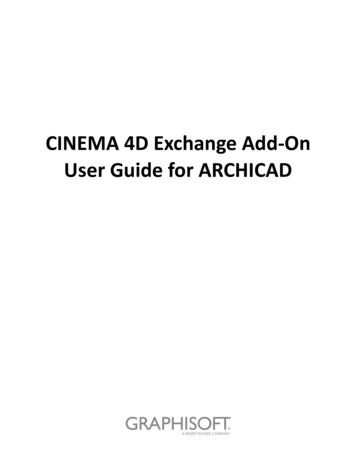

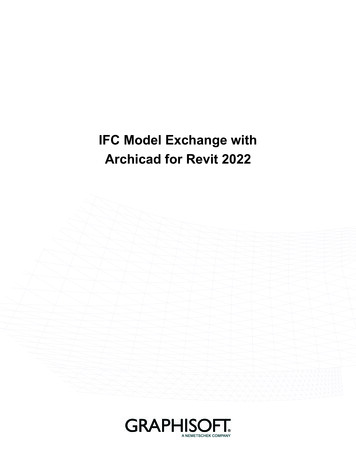


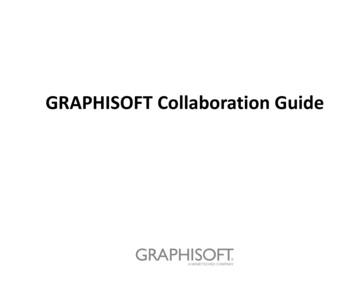
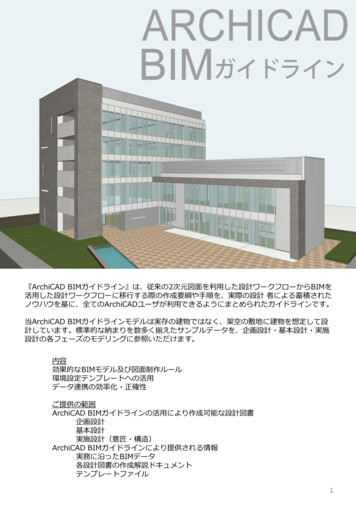
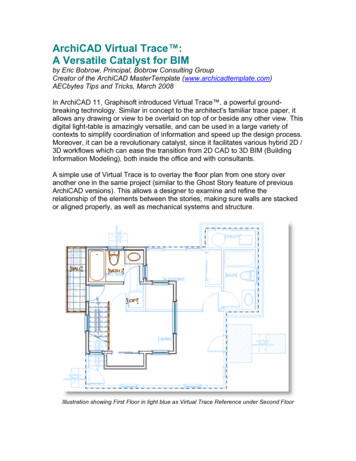
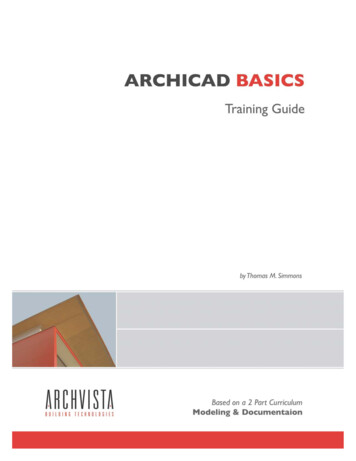
![[REPACK] Crack Cigraph Archisuite Archicad 16 Build 3270 Winl](/img/47/darakany.jpg)